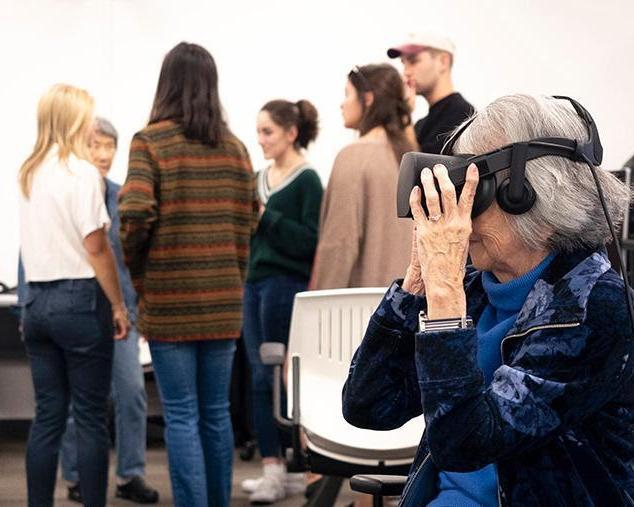
Digital Storytelling Through the Visual Arts
Students in Professor Moro’s ELSJ course used digital media arts to document the stories of Japanese Americans incarcerated during World War II.
By Ally O'Connor '20
Capturing history with his students, in the 2018-2019 academic year, Associate Professor Takeshi Moro (Art and Art History) led a new Experiential Learning for Social Justice class, titled “Digital Storytelling Through the Visual Arts,” that allowed SCU undergrads to connect with former Japanese American concentration camp incarcerates and amplify their stories, lives, and memories.
According to Moro, as students volunteered at the Yu-Ai-Kai Senior Center in San Jose’s Japantown, growing their understanding of the Japanese American community—including the WWII incarceration—his lectures taught “the tools to create stories using digital media arts such as photography, video, and VR headsets.” Moro shares that he was so interested in this topic “because the first account stories of the camps were slowly fading with the passage of time.” He and the students aimed to save these recounts of human experience. The culmination of the class volunteer time and course material led to a final project based on interviews with docents at the Japanese American Museum of San Jose. In sum, the students created 360 short videos of the former incarcerates.
When asked about her experience in the class, Andrea Feliz ’20 (Business Management and Studio Art) says that her conversations were “extremely intense, eye opening, and meaningful, and I don’t think I will ever forget them.” While volunteering at Yu-Ai-Kai, Feliz attended their biweekly “coffee hour,” which she describes as “some of the best hours of my week. Here, a classmate and I sat around a long table with women of all ages. We sat, drank coffee, and laughed harder than I ever imagined. Our visits to Yu-Ai-Kai were some of the most meaningful and genuine interactions I have had. The women were full of love and gratitude, sarcastic jokes, and lots of seaweed.”
Reflecting upon her final project, Feliz shares that she learned “when it comes down to it, storytelling is all we’ve ever really had and art is a way to preserve the cultural expressions that have been passed down from generation to generation.” Of her overall experience, she says, “it was an absolute honor to engage with these wise men and women and be a part of such an open and vulnerable discussion of the past. I hope that more students in the future are able to share in the experiences that this course offers.”